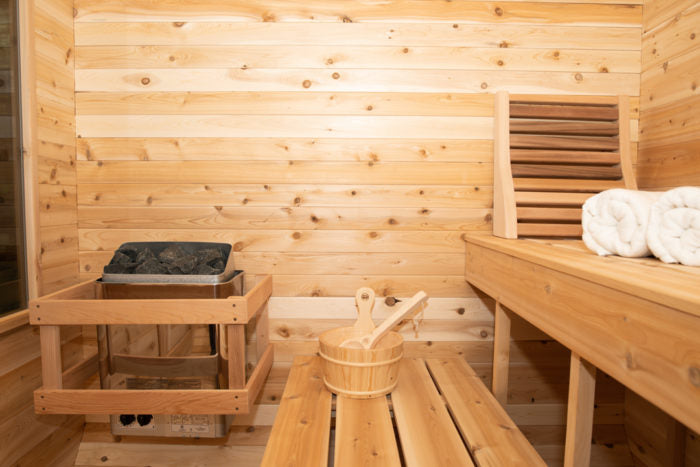An Unbiased View of Traditional Sauna
Table of ContentsThe 10-Second Trick For Traditional SaunaTraditional Sauna Fundamentals ExplainedSome Ideas on Traditional Sauna You Need To Know3 Easy Facts About Traditional Sauna DescribedA Biased View of Traditional Sauna
The majority of the weight lost in a sauna is water loss and is re-gained upon rehydrating. Without a question sauna can be a crucial component of a healthy and balanced weight loss program. To consider the differences between typical and IR saunas, I will separate these into proven, theoretical, and produced differences.Therefore, the most popular factor in the saunawhich goes to the ceiling straight over the sauna heateris commonly in between 185 and 190 F. Claims that a typical sauna exceeds 200 F is simply not real and not applicable for electric saunas sold in the US. The temperature for a far-infrared sauna is usually set between 120 and 140 F; however, unlike the typical sauna, the objective in and IR area is not to attain a high temperature level.

When a conventional sauna has actually been appropriately heated up, the sauna wall surfaces are warm, the air temperature has actually achieved established temperature and the rocks are incredibly heated. As an interesting side note, the warmed walls and the rocks are releasing far-infrared warm, combined with the warmed air, to create an "covering warm".
More About Traditional Sauna
When the high temperature is accomplished, the components cycle on and off to keep the heat. Many standard sauna customers take pleasure in putting water over the rocks to create heavy steam to increase sauna moisture levels. The benefits of putting water over the rocks consist of: making the area a lot more comfy, moistening the nasal flows, and permitting the use of aromatherapy by mixing crucial oils with the water.

When the energy gets in the body, it creates the body temperature level to boost and eventually leads to sweat. In an infrared sauna it's important for the emitters/heaters to remain on almost continuously. Considering that there is no mass of rocks to preserve warmth, the sauna will certainly cool if the emitters shut off.
Not known Details About Traditional Sauna
As discussed over, the sauna bather in an infrared area wishes to position himself in front of operating emitters to obtain maximum take advantage of the warmth. The home heating time for both spaces can be extremely different, depending upon just how the spaces are used. For a conventional sauna, a bather ought to permit 30-40 minutes for the click reference area to accomplish a wanted temperature level and to appropriately pre-heat the rocks.

A well built sauna will usually achieve a temperature of 150-160 F in regarding 30-40 mins. For hotter temperature levels, the area may need to heat for a longer period.
To some, 15 minutes was "lost" while the infrared energy heated up the timber panels instead than warming a body, while others locate a pre-heated room to be a lot more comfy and think a raised starting temperature is needed to start sweating. The length of suggested use for every space is around the same (10-15 minutes per session); nonetheless, due to the lower air temperatures and the capability to feel the impacts of infrared heat much faster than a typical sauna, it is not unusual for an individual to spend an overall of 20-30 mins in an infrared sauna.
Facts About Traditional Sauna Revealed

The ordinary cost per kWH of power in the united state is roughly $0.11, so a 4.5 kW heating system will cost around $.50 to compete one hour, if the heater runs constantly for one hour. Generally a sauna heating unit will certainly compete 75% of the initial hour and 50% of subsequent hours on considering that the elements cycle once the established temperature is accomplished.
A 2 individual far-infrared space is usually physically smaller sized than a traditional sauna, commonly regarding 4' x 4' or smaller sized. The IR furnace is usually 1.5-1.7 kW making use of a 120 volt 15 amp plug-in service. Given that the room can be More Info used faster important source than a sauna space, we will assume the area is made use of for to of an hour consisting of warm up time.
There is a hardly ever reviewed distinction in the social experience in between the two spaces. While our society has actually shed a few of the social advantage of the typical sauna experience, it can be really socially rewarding (Traditional Sauna). From family members time in the sauna, to heart-felt conversations with considerable others, to sauna partiesthe typical sauna experience can bring about intimate mingling
Facts About Traditional Sauna Revealed
Most greater end infrared spaces include colored light treatment, noise systems and full-glass fronts.
Comments on “Getting My Traditional Sauna To Work”